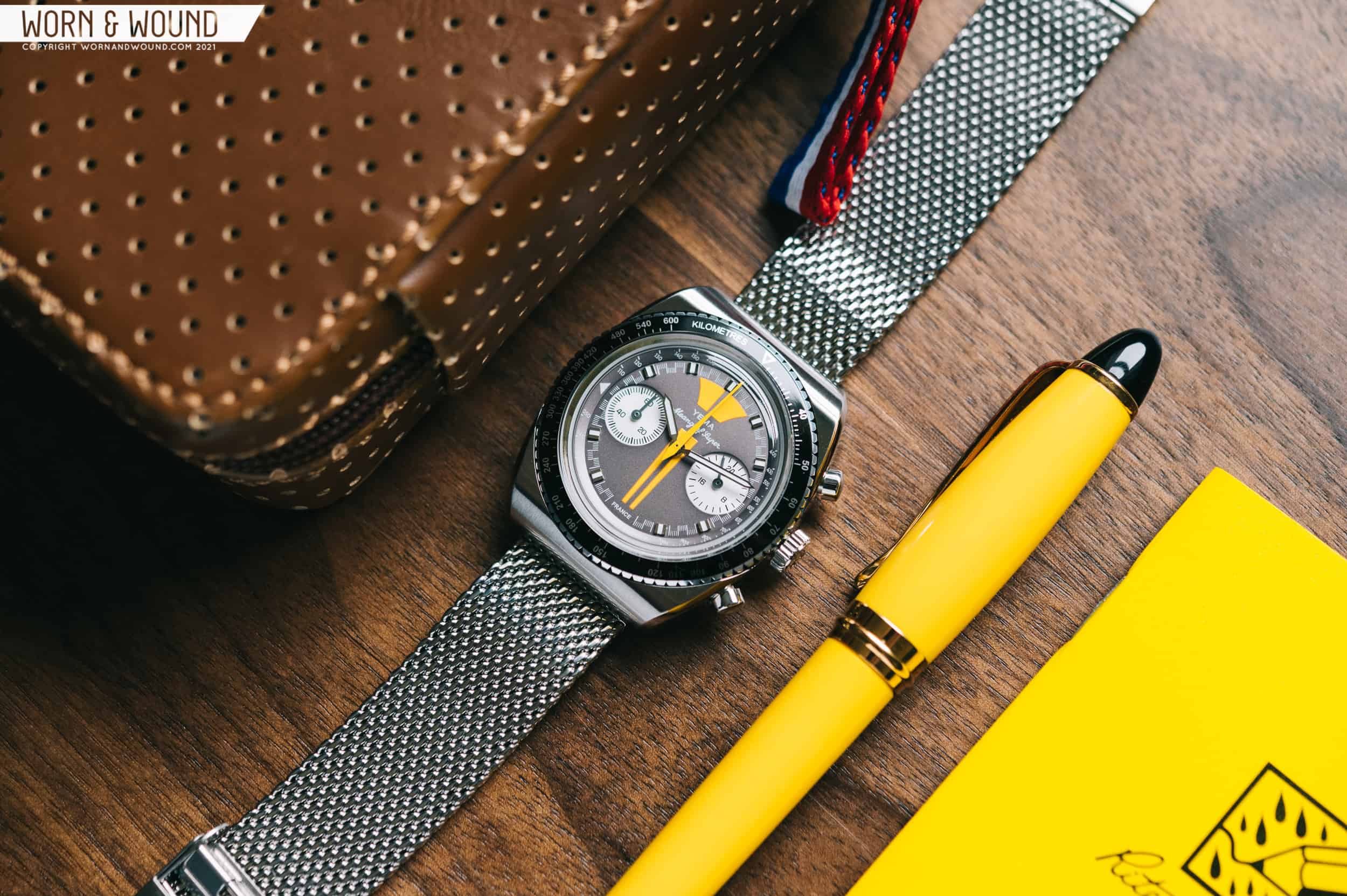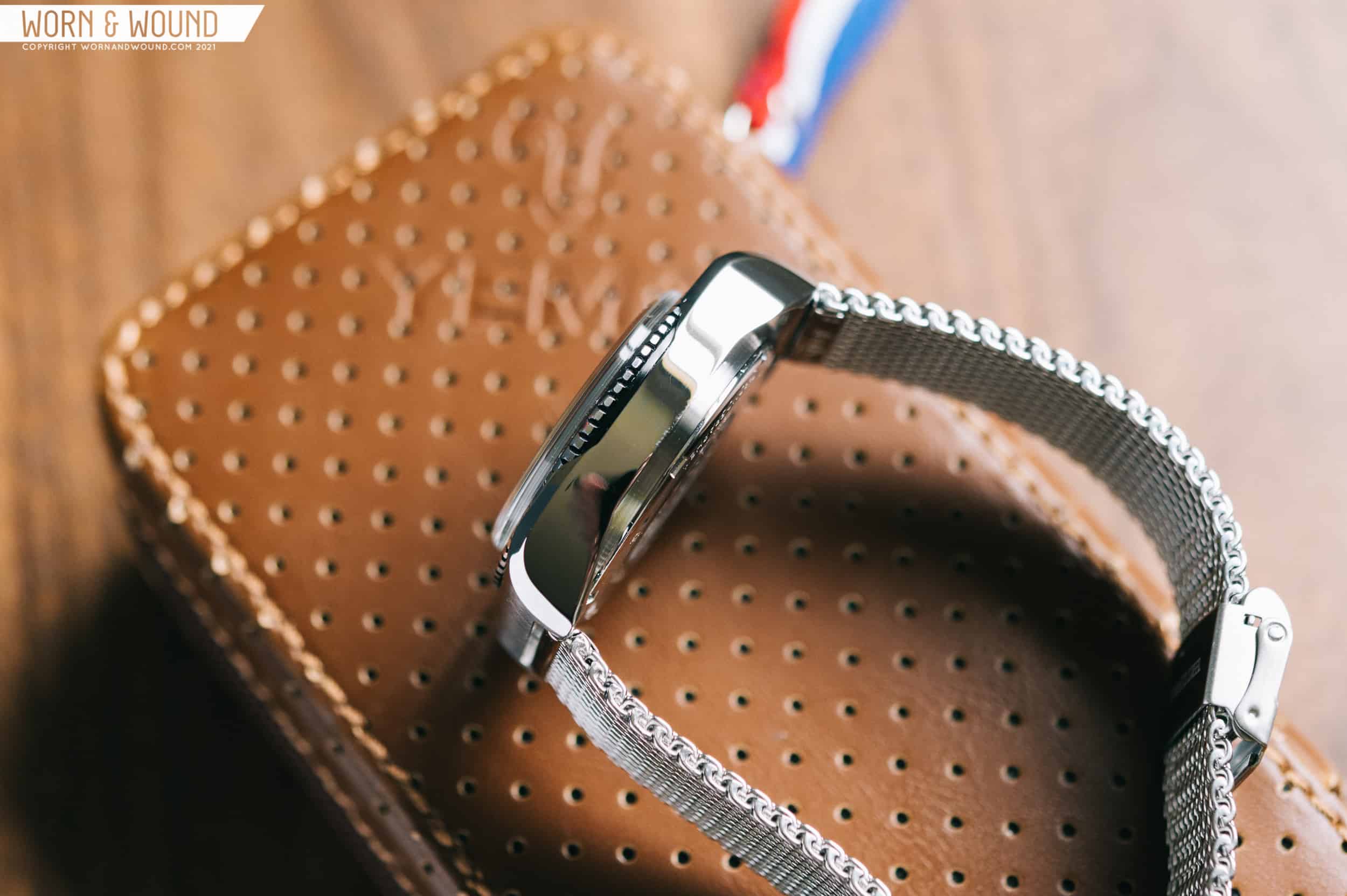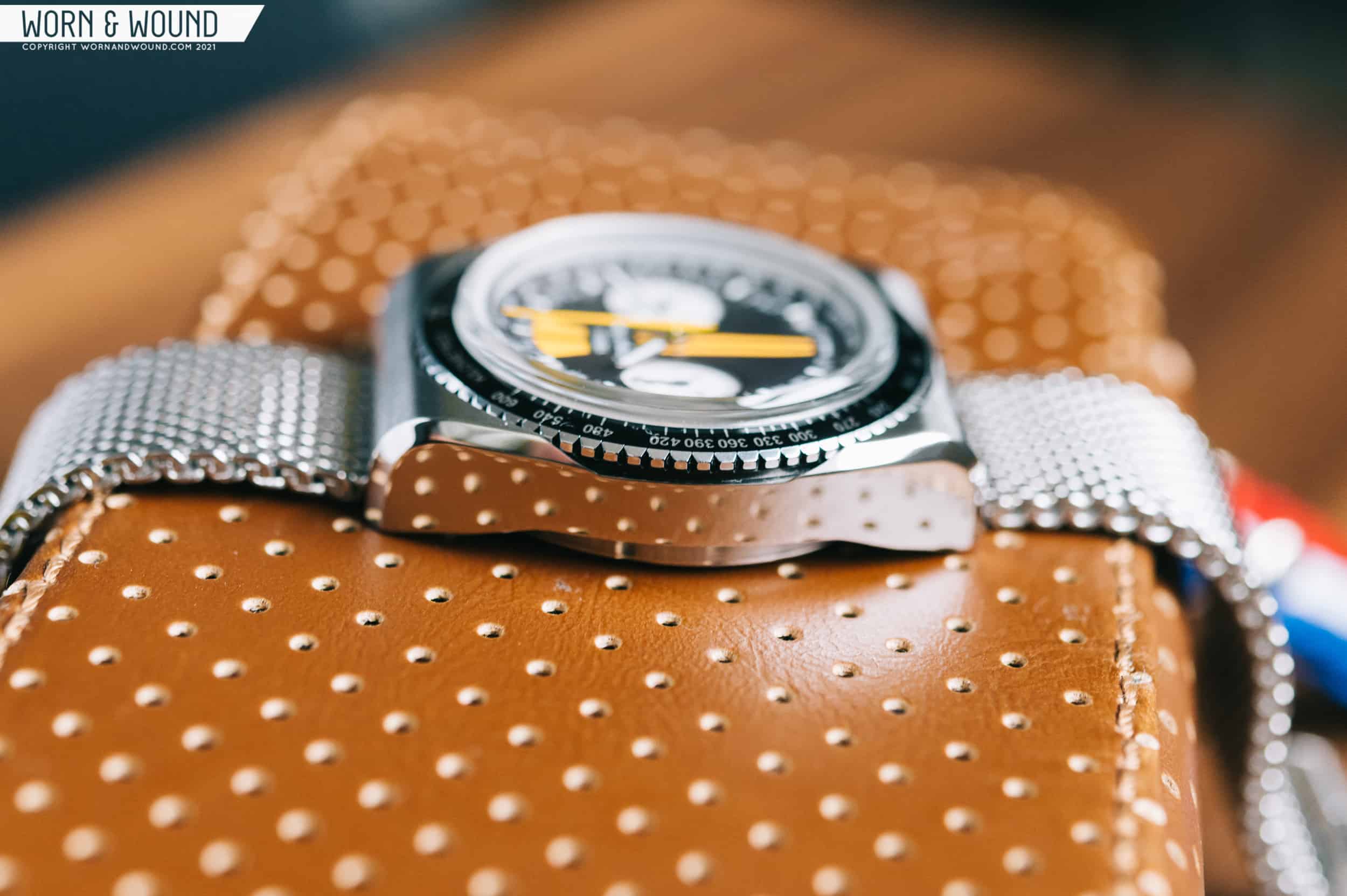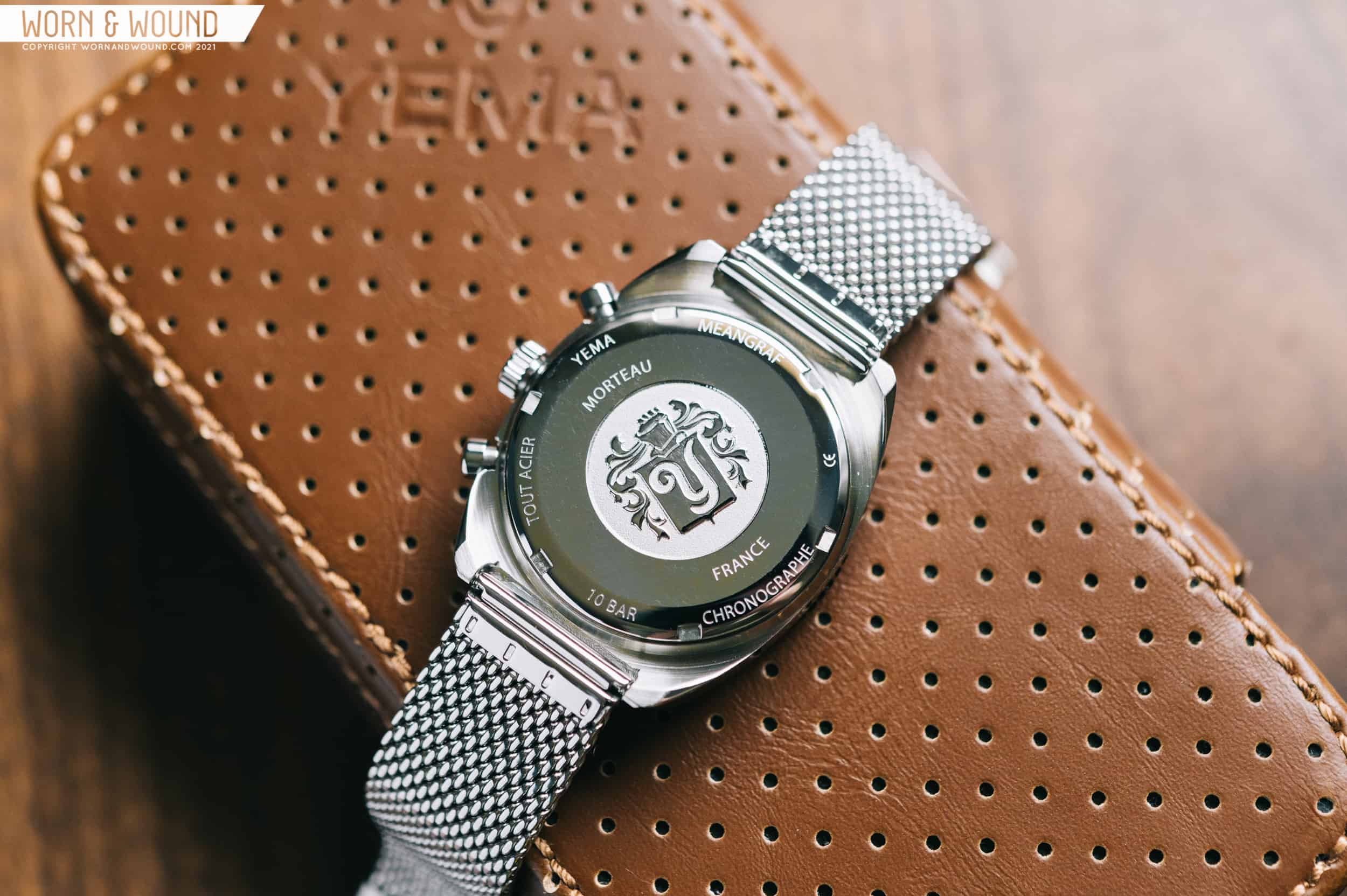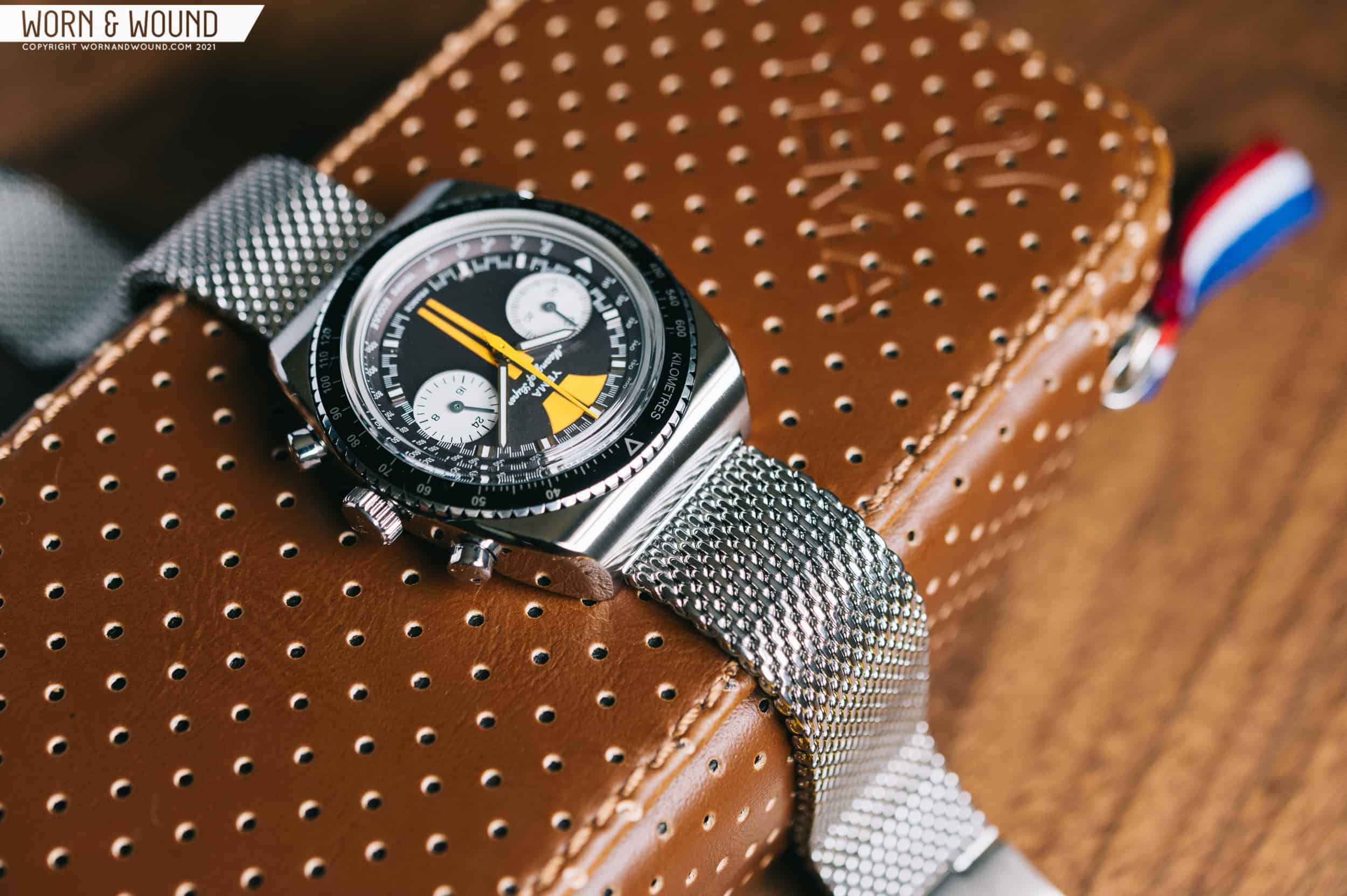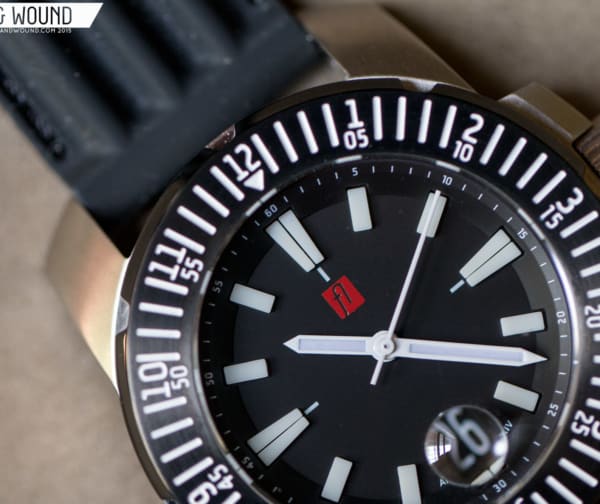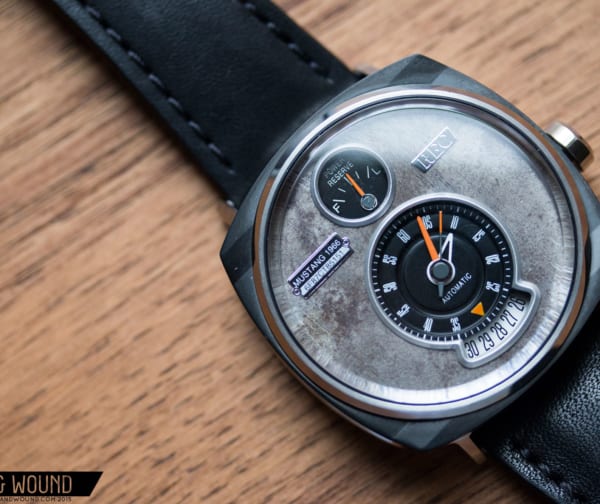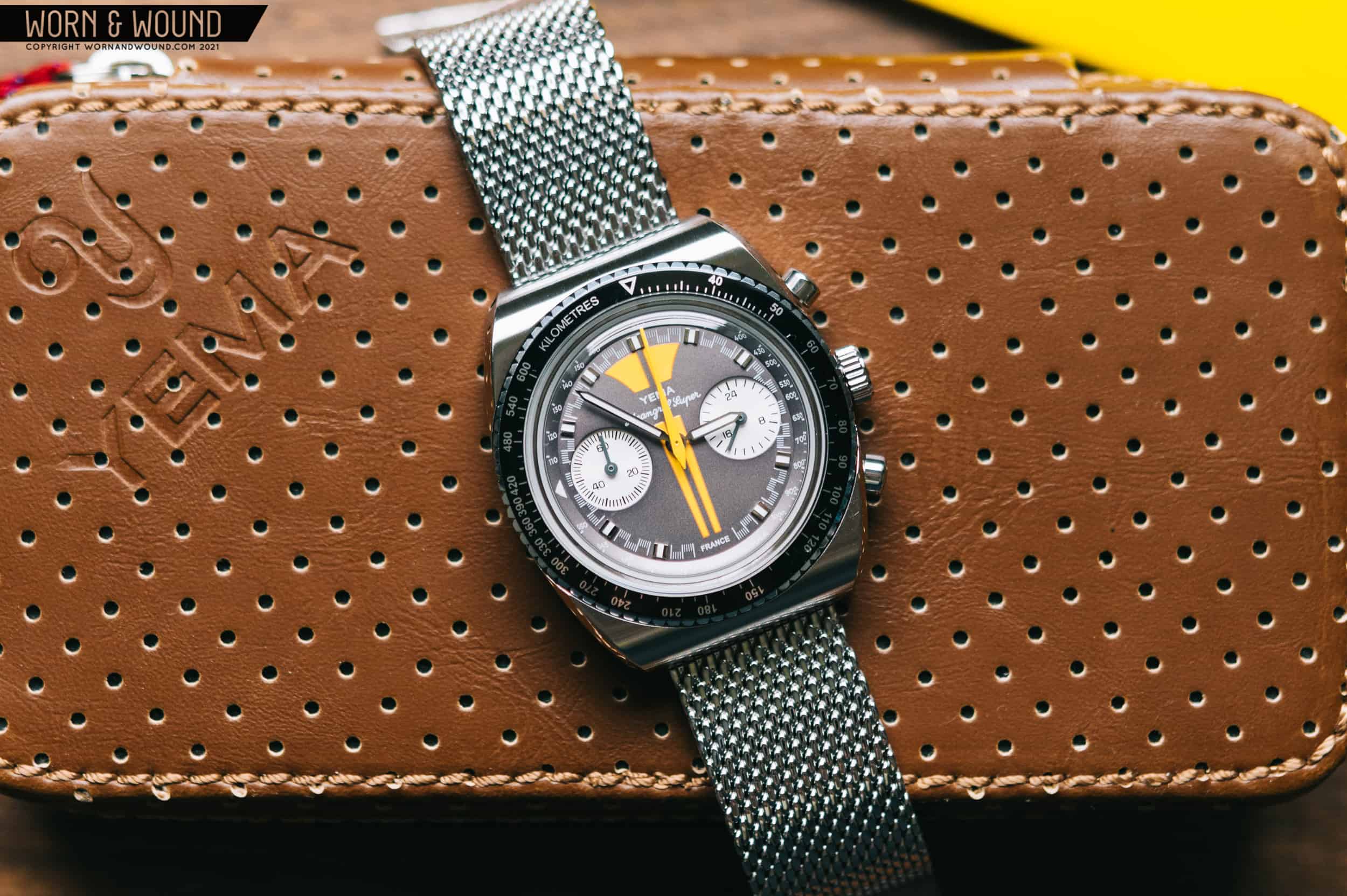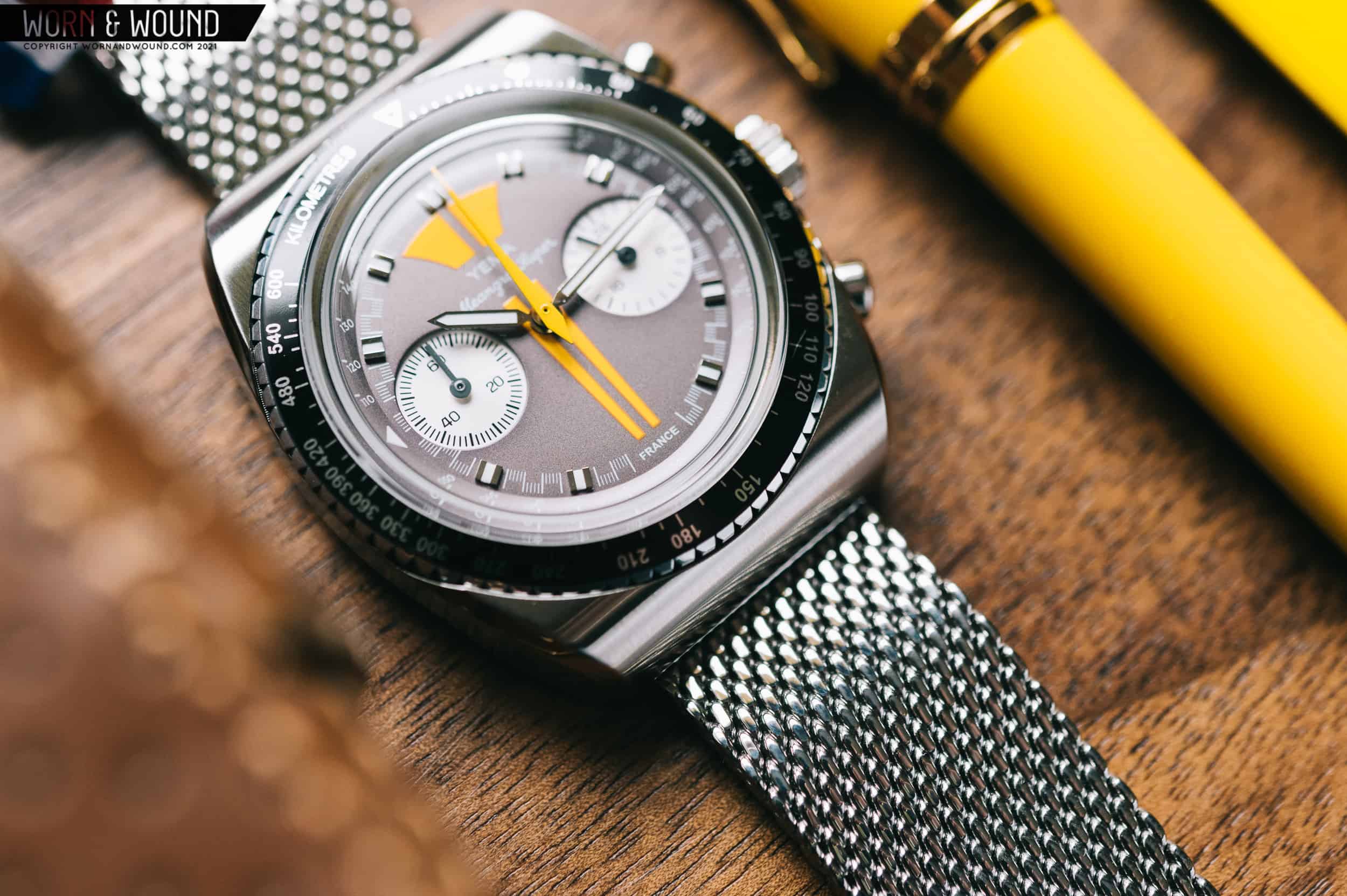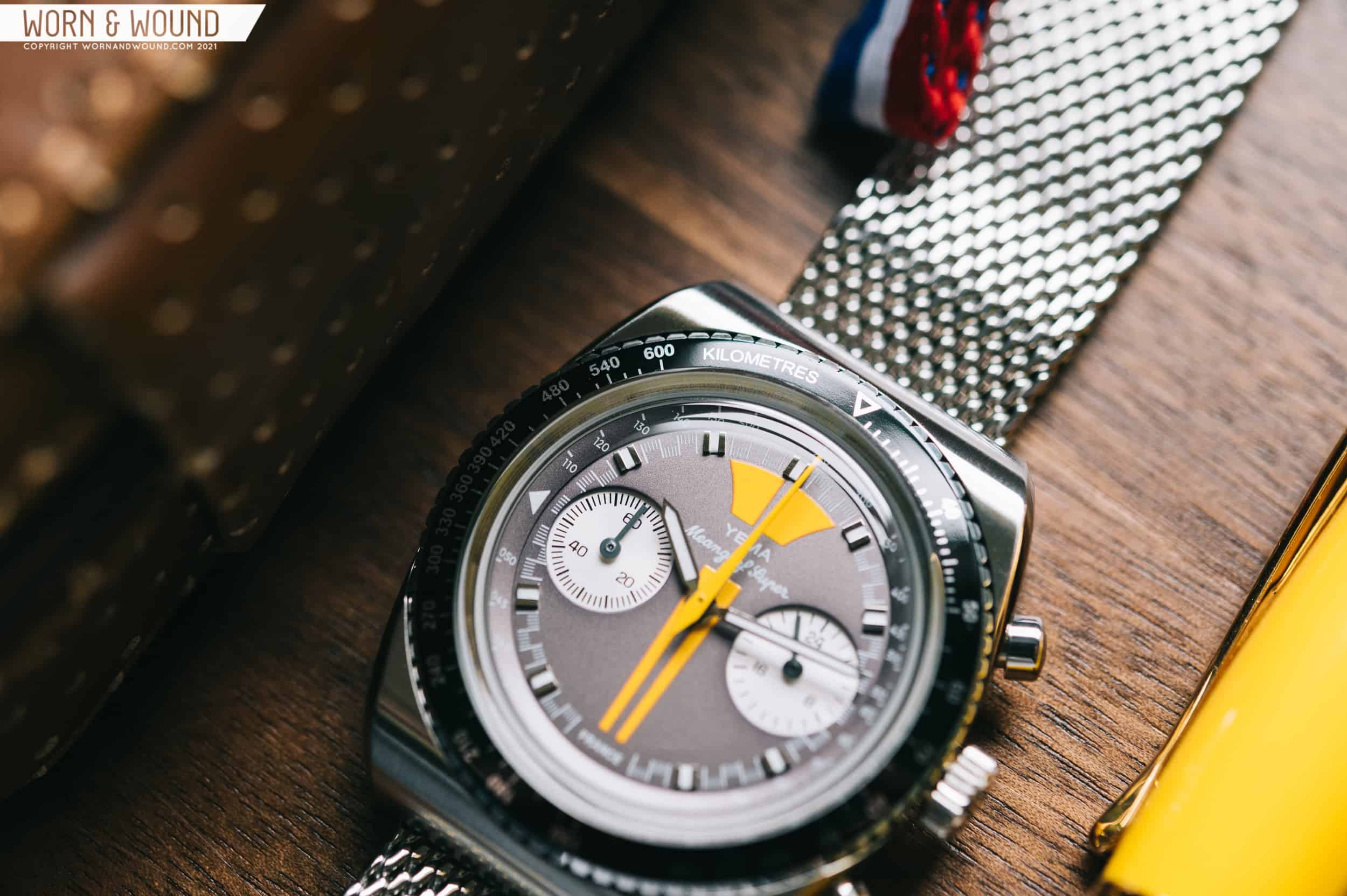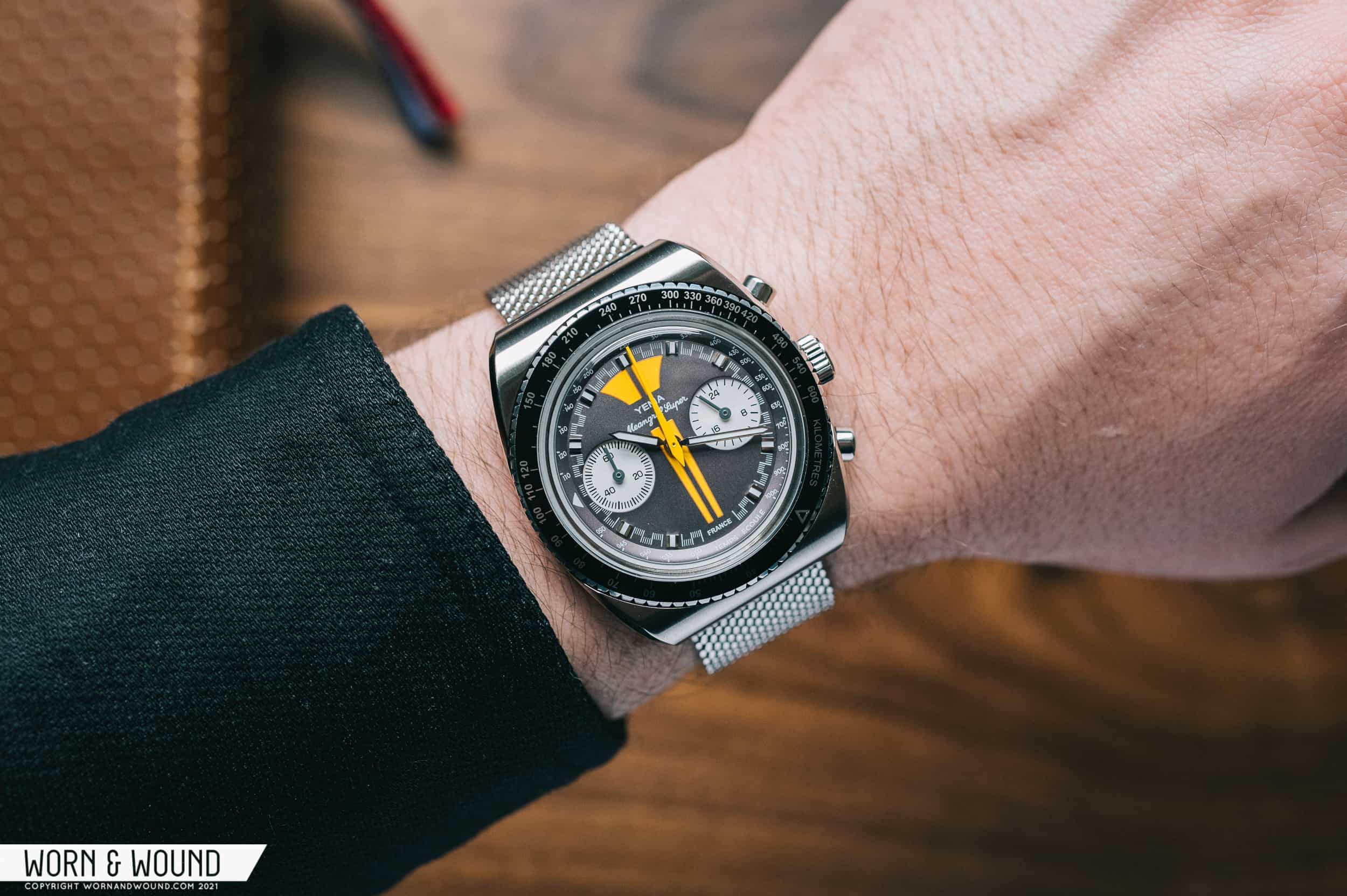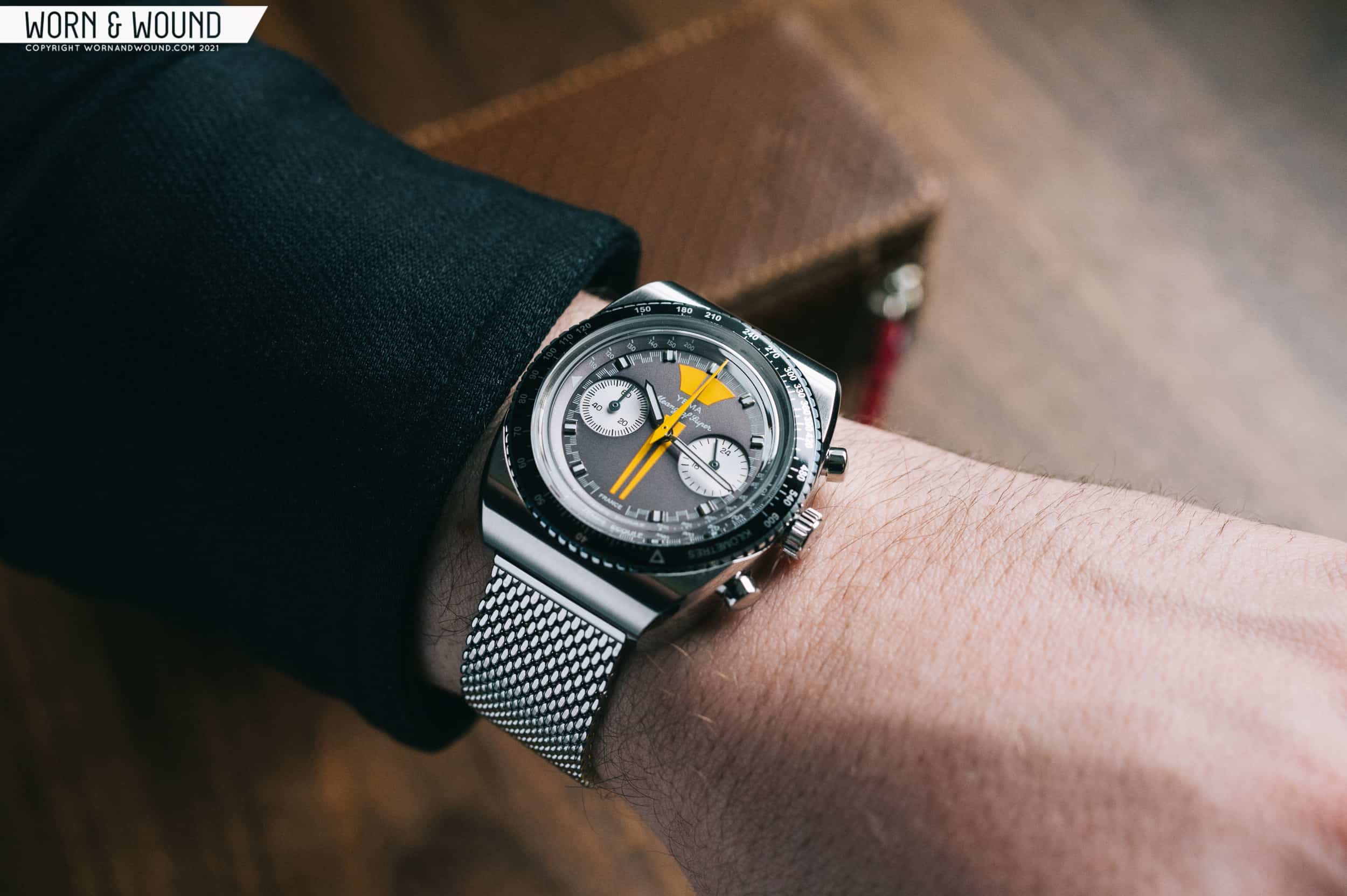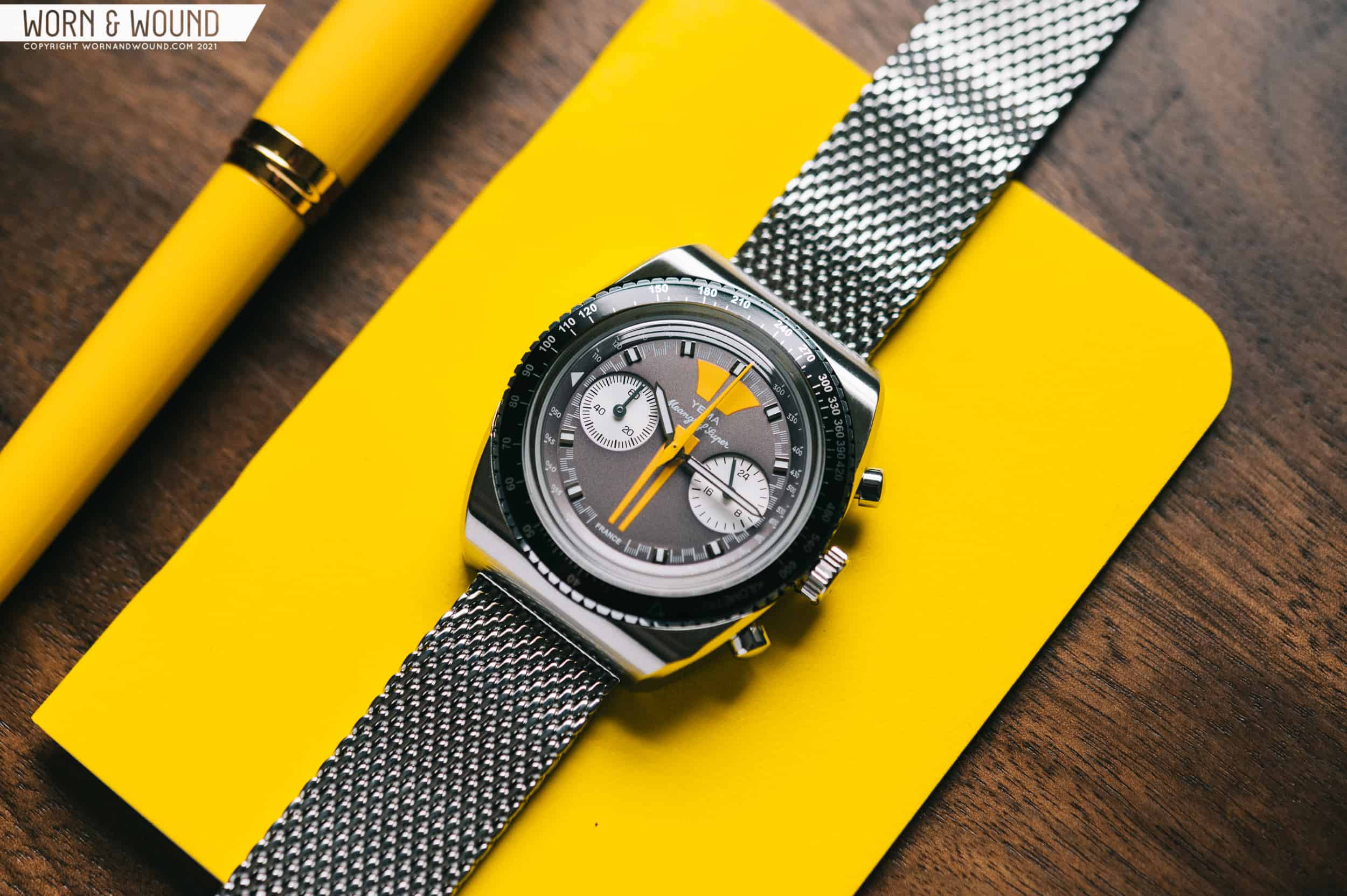There was certainly no shortage of funky chronographs in the 1970s. Bright, colorful dials, unique timing functions, and a wide range of interesting case designs became kind of a calling card for the decade. Brands like Zenith, Bulova, Tudor, and even Omega embraced the 70s aesthetic, each with their own takes on the chronograph. Yema has been making watches out of France since the late 1940s, but really hit their stride in the 1960s with their popular Superman dive watches, and eventually the racing-centric Rallygraf. A decade later in the 70s, they put out another racing inspired watch called the Meangraf — a funky series of chronographs that were built specifically to calculate the average hourly speed of a race car.
Stick with me here, to participate in the calculation of average speed, one would use the chronograph feature to time the race (of which they knew the set distance), and then rotate the single purpose calculation bezel to line up the time elapsed with the distance traveled, and then the average speed of the vehicle could be read out via a triangle pointing to the number at 9 o’clock. An interesting and highly specific complication, this speed calculating bezel is not often seen in the watch world…until it’s recent reissue on Yema’s resurrected Meangraf.
Today, we’re taking a look at the modern re-release of Yema’s racing watch. Sporting the same name as its predecessor, the Meangraf isn’t quite as angry as it sounds. While not the most known model in the Meangraf lineup, Yema opted to release a lesser-known, funkier variant from the past. Today’s version is a very solid 39mm block of steel with an inset bezel, mechaquartz movement, and a fun dial with yellow accents. At a touch under $350, it’s all the charm of a 70s chronograph without the potential headache of going vintage.
Editor’s note: The images seen in this review depict a pre-production prototype, and may not represent the final production quality.









 Featured Videos
Featured Videos




